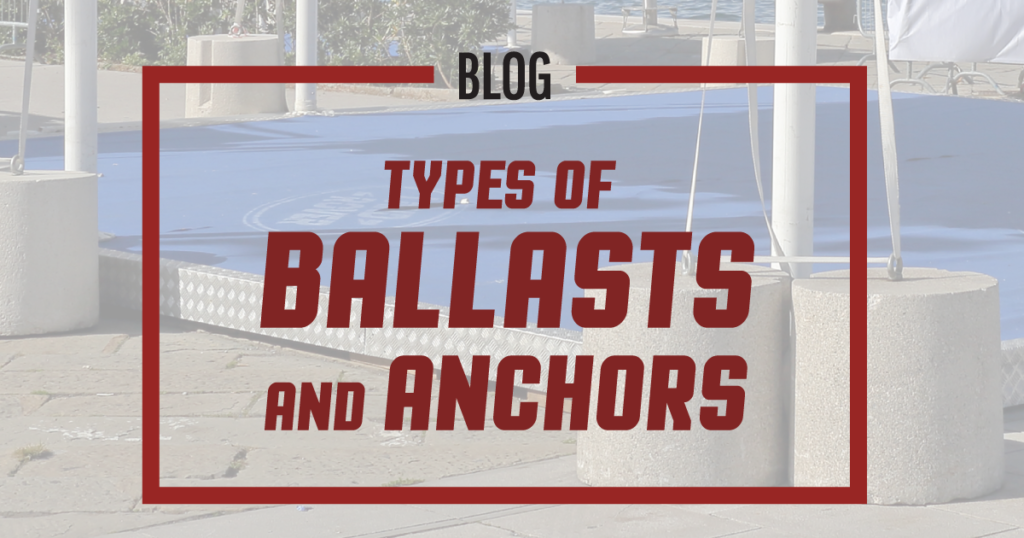Event Tents
Types of Ballasts and Anchors
At Tent Renters Supply, we pride ourselves on manufacturing and providing the best tent solutions for our partners in the rental industry. Whether you are seeking an engineered or non-engineered tent for your rental company or event planning business, we can provide you with high-quality, custom engineered parts and accessories to best suit the needs of your dynamic business.
In this article, we will be discussing some of the most common types of ballasts and anchors that are used in the industry, with some additional guidelines set by the Industrial Fabrics Association International (IFAI) that determine which are recommended for specific applications.
Stakes
Staking is a classic practice, and the IFAI has created an extremely helpful pocket-sized guidebook demonstrating how to install a tent including comprehensive details about how to stake, single stake, and double stake for installers in the industry.
Some relevant questions when staking a tent include:
- How close to stake the tent?
- When to double stake?
- What’s the correct way to angle or pull the rope?
- How to determine if a stake is too deep or shallow?
Matt Perra, President and Product Engineer at Tent Renters Supply explains that these guidelines are a methodology to understand, though there are really several avenues to staking a tent correctly.
“Some of our customers ask us some questions on how to correctly stake a tent, and our answer is there probably isn’t a “single right” way to do it. For instance, you can stake a really steep, or you can go really shallow. You might have situations where you have to have a shallow pulling because you’re restricted. What’s important is to account for those factors, and then adjust your amount of resistance that you’re staking appropriately.”
When it comes to specific types of stakes, the IFAI lists several types with different qualities, such as ribbed vs. smooth stakes, wooden vs. steel stakes, stakes with smooth sides vs. ribs.
Block N’Roll
Now becoming a popular choice for installers is the block and roll system, or concrete precast blocks used to anchor large tents.
“The challenge is transporting these blocks to the installation site,” explains Perra. “These blocks weight anywhere from 500 to a few thousand pounds. You can’t just pack that on a pick-up truck and drive to the site, so it’s more difficult for smaller companies to manage some of these things.”
Water Barrels
According to Perra, Barrels are much easier to transport, solving that operational piece of the puzzle for many tent installers. “A single water barrel can get you right around 500 pounds of resistance,” Perra says.
However, since water barrels have a higher center of gravity vs staking, and less friction with the earth, they are more susceptible to tipping over, or even sliding across the ground they’re laid on.
“Water barrels can very easily shift and slide across the ground,” says Perra. “They’ve been used a lot, but the industry is slowing shifting away from them and moving towards something like the concrete block systems.”
Sandbags
Depending on how long your tent will be erected for, sandbags can be another option in securing a tent.
“I wouldn’t recommend sandbags by any means, there is no way they could provide enough weight to truly withstand a significant wind event. If it’s a short install, such as for a job fair, or is very temporary, it could be suitable. It could be very costly to bring out concrete blocks for something like that, and difficult to justify the cost,” he adds.
Tent Renters Supply understands that every installation site is different, every condition is different, and therefore there is some room for interpretation on the end user to try to achieve the readings placed in the guidance documentation.
At Tent Renters Supply, we have the knowledge and expertise to design, manufacture, and deliver custom tents serving a number of industries, from retail to sporting events, to festivals, hospitality – and everything in between. Contact us today to get started on your tent needs and discover the Tent Renters Supply difference!

